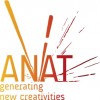Over the last few decades our post-industrial culture that once worshiped the myth of individual heroics and thrived on fierce competition and the survival of the fittest, has been challenged by the idea that co-operation and sharing actually works to ones advantage. Ironically to attain a competitive edge companies shared secrets, opened up their source code, blogged about products under development, made management decisions publicly, worked with rivals and admitted to failures. This phenomena has been termed Radical Transparency, but it sounds to me like good old fashioned Open Source culture dressed up in a shiny new suit.
Ironically to attain a competitive edge companies shared secrets, opened up their source code, blogged about products under development, made management decisions publicly, worked with rivals and admitted to failures. This phenomena has been termed Radical Transparency, but it sounds to me like good old fashioned Open Source culture dressed up in a shiny new suit.
Scientists too are gaining more evidence of how cooperation actually works in biology, with the recent revelations that the human genome might not be a collection of independent genes with each DNA sequence linked to a single function, such as a physical characteristic or predisposition to disease. Genes, its appears, are social beings operating in complex networks which interact and overlap with one another and with other components in ways not yet fully understood.
In response to this growing cultural movement, our spring edition of ANAT’s filter magazine, distributed under a share alike licence, examines the creative practice of free sharing and cooperative content development in the arenas of artware, software, biology and publishing:
-In an excerpt from his book project The Next Layer, Armin Medosch eloquently sums up the philosophy of Open Source Culture, in which he states “In Open Source Culture everybody has the chance to create immaterial and material things, express themselves, learn, teach, hear and be heard”;- Andrew Lowenthal, co-founder of EngageMedia a non-profit organisation dedicated to providing media tools to activists, campaigners, communities and citizen journalists, asks us to consider what’s not free about free beer? Just what are you giving away at when you upload your content to the trio of Web 2.0 hype – YouTube, MySpace and Flickr ;-a beginners guide to making open source video based on lessons learnt from OPEN CHANNEL’s Video Slam project by Elliott Bledsoe and Jessica Coates of Creative Commons Australia;
-Alessandro Ludovico, media critic and editor in chief of Neural online and inprint magazine which has been exploring new media art, electronic music and hacktivism since 1993, speaks of his love affair with paper; and
-in Patients, Patents and Protocols, Paul Vanouse, an artist working in Emerging Media forms, whose practice is guided by radical interdisciplinarity and impassioned amateurism, considers how corporations and patent laws suppress the creation of vaccines and how the open source software model maps onto biology.
Continuing our engagement with these concepts, ANAT’s 2007 still/open Distributed Media Lab will travel to the cities of Melbourne, Perth and Brisbane during September facilitated by Beatriz da Costa (USA), Alessandro Ludovico (IT) and Andy Nicholson (AU). Coming together both locally and in blog space almost 50 participants across Australia will engage in both simple and complex network interactions producing unforseen outcomes. Participants will process, copy and modify the concepts, skills and products of the labs, and redistribute them back into their community further informing and inspiring others to continue the cycle.
Filter also brings you news of our Portable Worlds mobile phone touring exhibition and profiles BioArtist Alicia King who was a recent recipient of our Professional Development Travel Grants to undertake a three-month residency at the Genomics Centre in the Netherlands. We announce the successful artists for the ANAT managed Arts Vic Arts Innovation Residencies (AIR) – part of ANAT’s greatly expanded Art Science Program.
As well we update you on the many strands of our Synapse program which we produce with funding from the Inter-Arts Office of the Australia Council , including the announcement of successful artists for the 2007 Synapse national and international residencies, part of which was our very elegant launch of the long awaited redeveloped synapse.net.au in Sydney recently. Synapse.net now provides the most comprehensive database of art and science artists, artwork, exhibitions, research and texts globally and also houses our new Synapse email forum, which will kick off in October with a investigation of differing perspectives in BioArt practices.
As a network of people creatively engaged with emerging technologies, ANAT is committed to enriching the cultural context in which we operate. We do this by introducing skills, resources and ideas into diverse communities, and I would like to thank our many partner organisations who make this possible. In the next few months ANAT will produce seven events, forums, exhibitions and workshops across the nation including events at BEAP and Electrofringe Festivals.
Wherever you are I hope you can join us in generating new creativities.
Melinda Rackham
Melinda was the Executive Director at ANAT from 2005 to 2009.
 This work is licensed under a Creative Commons Attribution-NonCommercial-ShareAlike 2.5 Australia.
This work is licensed under a Creative Commons Attribution-NonCommercial-ShareAlike 2.5 Australia.






